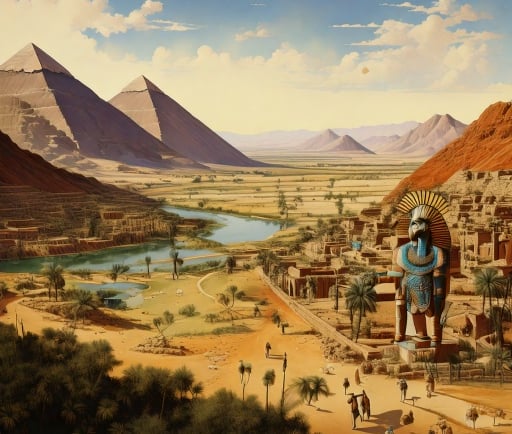The King Khufu: One of the Seven Wonders of the World


Introduction to King Khufu
King Khufu, also known as Cheops, was an ancient Egyptian pharaoh of the Fourth Dynasty. His reign around 2589 to 2566 BC marked significant advancements in architecture and state organization. Khufu is perhaps best known for commissioning the Great Pyramid of Giza, an architectural marvel that has fascinated historians, archaeologists, and tourists alike for centuries. The Great Pyramid of Giza is celebrated as one of the Seven Wonders of the Ancient World, showcasing not only the grandeur of ancient Egyptian culture but also the engineering prowess of its people.
The Great Pyramid of Giza
The Great Pyramid, constructed as a tomb for King Khufu, is the largest of the three pyramids located on the Giza Plateau. Originally, it stood at approximately 146.6 meters (481 feet), making it the tallest man-made structure in the world for over 3,800 years. What makes this pyramid particularly interesting is the precise engineering that went into its construction; it comprises an estimated 2.3 million blocks of stone, each weighing an average of 2.5 tons. Such monumental effort reflects not merely on Khufu's ambition to attain immortality but also on the organized labor and resources of ancient Egypt.
The Legacy of King Khufu
Khufu's legacy extends beyond the impressive confines of his pyramid. He symbolized the absolute power of the Egyptian state and the divine right of kings. During his reign, significant advancements occurred in various fields, including mathematics and governance. The societal organization necessary to facilitate the pyramid's construction indicates a sophisticated administrative system capable of mobilizing a large labor force.
Additionally, the cultural impact of Khufu's reign continues to be felt. The interest in the pyramids has led to a wealth of research and discovery, continually reshaping our understanding of ancient Egyptian civilization. King Khufu stands as a testament to the civilization's artistic and architectural capabilities. His pyramid is not only a monumental structure but also a cultural icon recognized globally as a symbol of ancient Egypt.
In conclusion, King Khufu and his Great Pyramid encapsulate the essence of ancient Egyptian culture and its lasting legacy. Recognized as one of the Seven Wonders of the World, this awe-inspiring structure continues to attract millions of visitors, eager to connect with a historical period deeply embedded in mystery and grandeur. Understanding Khufu's contributions offers us a glimpse into the ancient world, reminding us of the ambitious spirit that defined one of the most remarkable civilizations in history.
